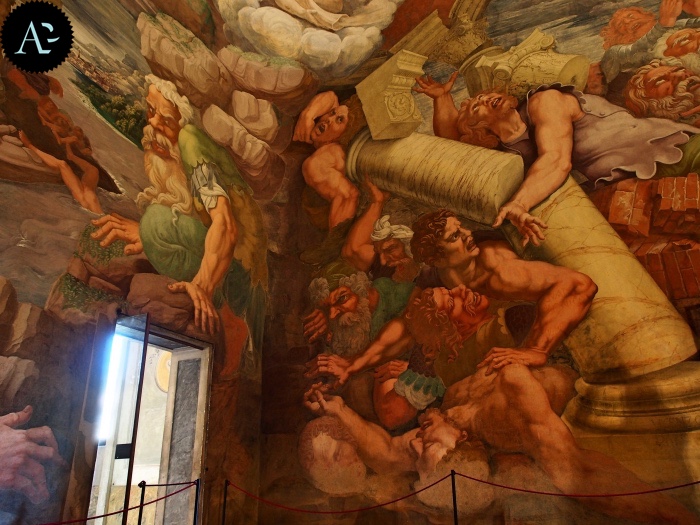
MANNERISM: DEFINITION, WORKS AND ARTISTS
Mannerism marks the end of Renaissance.
It’s a very long period, covering almost all the 16th century and which was theorized for the first time by Giorgio Vasari, who indicated as masters of Renaissance absolute perfection Leonardo, Raphael and Michelangelo, whereas all the following artists would only imitate the greatest artists with no hope of creating something more beautiful and perfect.
That’s how you get to Mannerism, that is a style imitating the style of the greatest Renaissance masters.
Here are the major mannerist artists and their works.
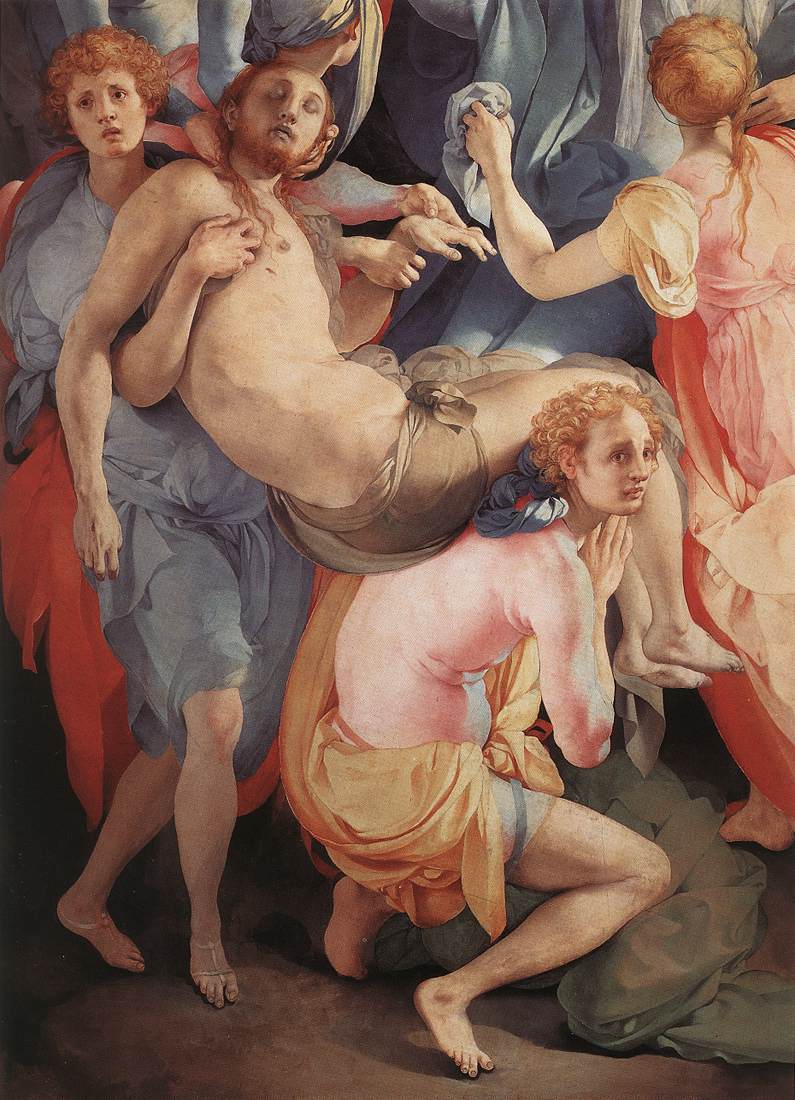
Pontormo, Deposizione (1526-28)
PONTORMO
Jacopo Carrucci, known as Pontormo (1494-1557), was able to balance Michelangelo’s muscular figures with Leonardo’s sfumato.
His works are famous for elongated bodies, and one of his most important paintings is the “Deposition from the Cross” (1526-1528) painted for the Barbadori Chapel in the church of Santa Felicita in Florence.
Pontormo didn’t worry about perfect perspective, so much that his figures seem to float in an unreal environment.
READ ALSO: Michelangelo’s David, who is and where it is.
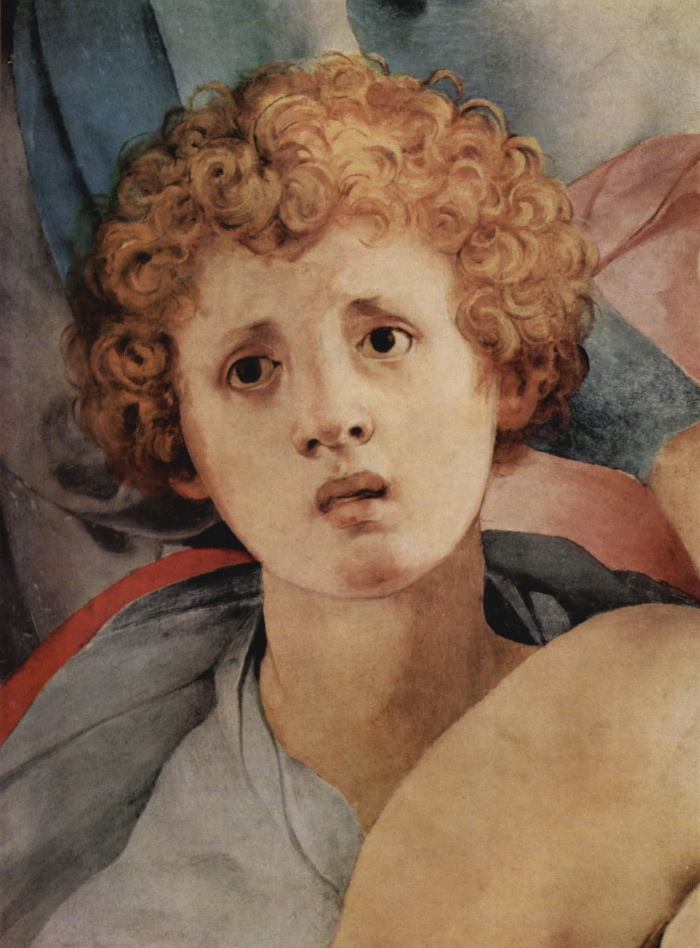
Dettaglio dalla Deposizione di Pontormo.
ROSSO FIORENTINO
Giovan Battista di Jacopo, known as Rosso Fiorentino (1495-1540), is famous especially for the “Volterra Deposition” (1521), a painting in which the cross goes through the whole composition, and three ladders lean against it.
The look of the viewer wanders in all directions, and the bodies of the characters are disordered and certainly little harmonious, whereas an unreal light shrouds the whole scene.
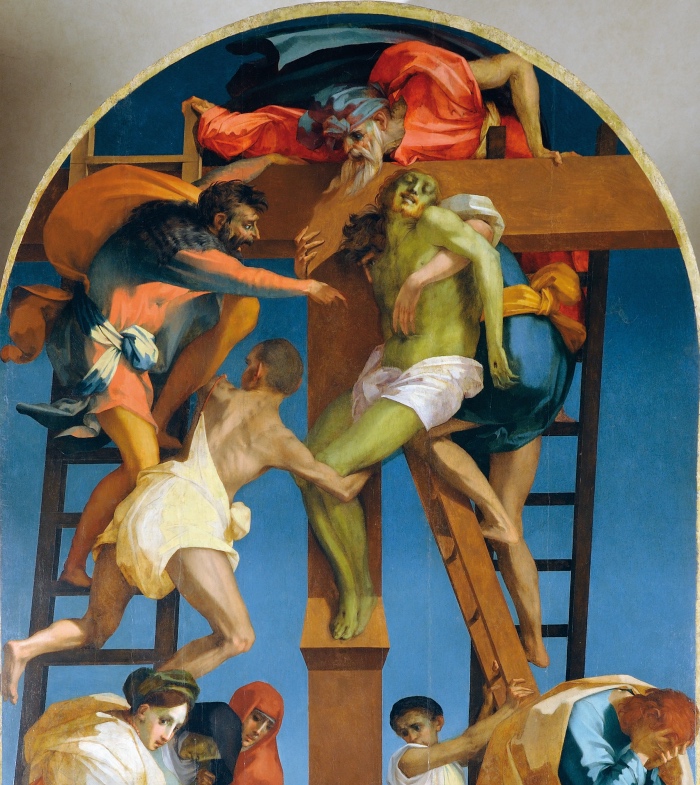
Rosso Fiorentino, Deposizione di Volterra (1521)
GIULIO ROMANO
Giulio Pippi, known as Giulio Romano (1499-1546), is the great architect who worked at the court of the Gonzaga family in Mantua.
He planned the “Te Palace” and painted the frescoes of the interior rooms, among which his masterpiece “The Falls of the Giants” in the Giants’ Room stands out.
The fresco in the “Te Palace” is a huge optical illusion and those who enter the room are catapulted into the painting depicting the Giants, sons of Uranus, punished by Zeus for trying to conquer Mount Olympus.
READ ALSO: Giulio Romano, life and works.
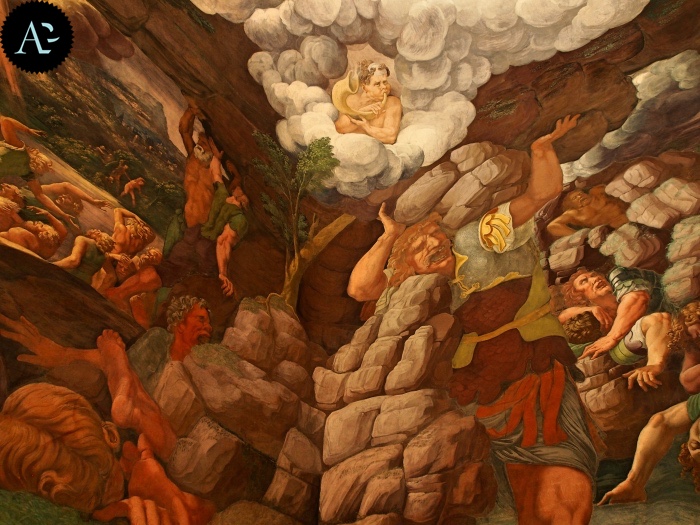
Giulio Romano, Sala dei Giganti
TINTORETTO
Jacopo Robusti, known as Tintoretto (1518-1594), was the most famous pupil of Titian and developed a brand-new method to insert the light inside his painting through colours. His paintings are theatrical and the images create optical illusions.
One of his early works already contained all the features which would make him the most important Venetian artist after Titian.
In the “Miracle of St. Mark Freeing the Slave” (1548) with a perspective never seen before, you can see St. Mark winging down from heaven to save the slave who had been condemned for praying on the tomb of the saint, and for this reason was about to be killed.
The light emphasizes the anatomy of the bodies and gives the whole scene a dramatic and excited tone.
READ ALSO: Works by Titian, 2 days in Venice.
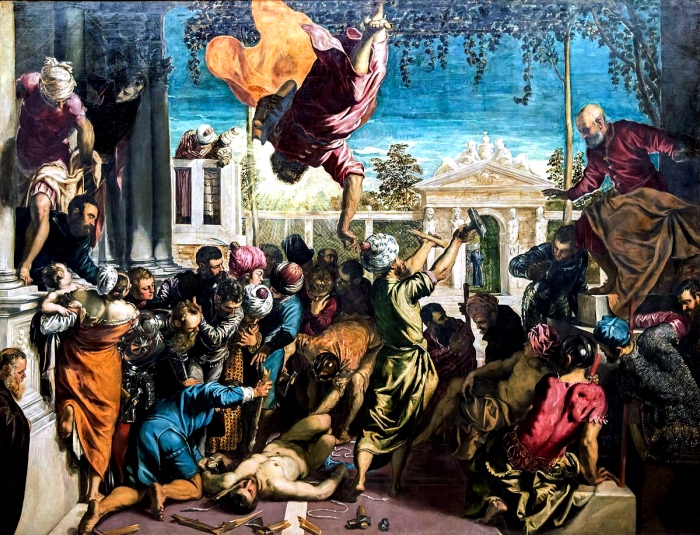
Tintoretto, Miracolo di San Marco
READ ALSO: Renaissance artist’s workshop.

